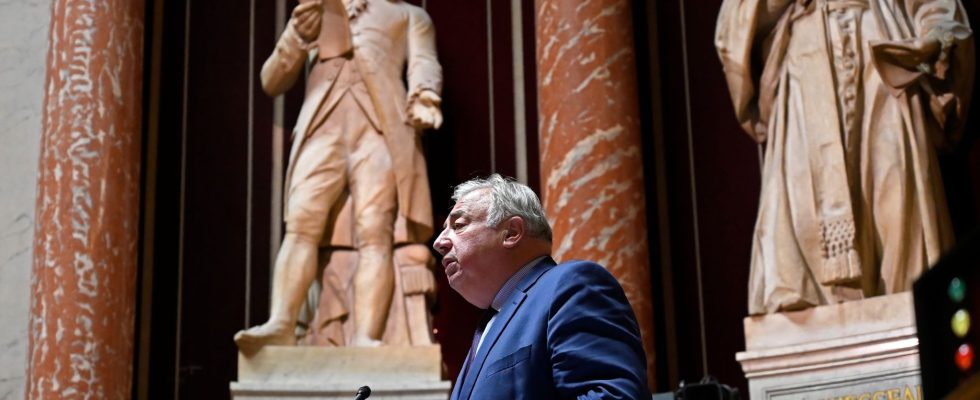We cannot say that the senatorial elections are those which create the most suspense in French political life. Sunday, September 24, nearly 80,000 voters will be called to the polls to renew nearly half of the elected representatives of the Senate.
For the 2023 election, nearly 1,900 candidates are claiming the 170 seats that are up for grabs, according to the Ministry of the Interior. An election for the upper house of Parliament which takes place every three years, but which struggles to interest the French due to its rather vague mechanism. We explain to you point by point how these elections work and what is at stake.
Which senators are affected by this election?
When the National Assembly represents the citizens, the Senate represents the local authorities (overseas departments and territories). Thus, this chamber has fewer elected officials than the National Assembly: 348 senators sit at the Luxembourg Palace in Paris.
If everyone is elected for six years, not everyone is re-elected at the same time. For elections, the Senate is divided into two groups, called “series of seats”: 170 senators for series 1, then 178 senators for series 2. Thus, every three years, only half of the senators are affected by the elections.
In 2023, it is therefore series 1 and its 170 senators which is concerned. To be even more precise, this concerns the senators of Indre-et-Loire, Pyrénées-Orientales or even the eight departments of the Ile-de-France region.
Who are the electors who elect the senators?
The way these senators are elected is also particular compared to other major elections. Rather than calling on the entire population to vote, as is the case to elect the President of the Republic or the deputies of the National Assembly, the Senate is only elected by a limited number of voters from around the world. policy. These are what we call “major voters”.
To be part of it, you must be a municipal councilor, departmental councilor, regional councilor, deputy… or senator yourself. Members of the territorial assemblies of certain overseas communities, such as Martinique or New Caledonia, are also concerned.
Around 78,000 people participate every three years in electing new senators, according to the website of the Ministry of the Interior, of whom “90% are municipal councilors”. There are so many of them that they themselves must nominate delegates who will vote for them.
It is therefore an indirect universal ballot: the French do not vote directly, but they rely on those they have elected in other elections to represent their vote.
How are votes distributed among candidates?
And since nothing is simple with the Senate, the distribution of votes works according to two different systems. Let’s first return to the basics: since the Senate is supposed to represent local authorities, each senator is attached to a territory: the more populated this area is, the more senators it has.
Some communities therefore have far fewer elected officials than others: Paris has, for example, 12 senators, while Creuse has only two. Reason why there are two voting methods: for territories with at least three senators, the candidates are grouped on lists and the votes will be shared proportionally to the results of each party.
But, for small territories with only one or two senators, the candidates present themselves alone or in pairs and will be decided by a two-round majority election, as for the presidential election. Clearly, whoever obtains the most votes wins the election, whether with more than 50% in the first round or by having more votes than the opponent in the second.
Who is the President of the Senate and how is he elected?
After each senatorial election, every three years, senators must elect the president of the Senate. The majority of votes therefore designate the head of the upper house of Parliament, as it has done for Senator Gérard Larcher (LR) for more than eight years.
As stated on the government website Public Life, “the president participates in the organization of the work of the Senate and directs the debates”, in addition to being able to appoint several members of certain institutions, including the Nuclear Safety Authority or the Constitutional Council. He can also contact the latter “if a text or provisions appear to him to be contrary to the Constitution”, specifies the site.
More than an administrative or symbolic role, the President of the Senate can also become the most important figure in the State: it is he who becomes interim President of the Republic in the event of vacancy or incapacity of the head of the State. state, as was the case in 1969 and 1974.
Why does the election impact groups in the Senate?
More than the appointment of the president of the Senate, one of the main issues of any senatorial election lies in the number of seats that each political party will obtain.
Indeed, once elected, senators can meet in groups. This is one of the essential workings of this chamber: for example, you must have a group to be able to speak “in organized debates and on current issues in government”, specifies the Senate website.
However, there must be at least 10 senators to form a group, and each elected official can only join one. If certain large parties like the Republicans should not have any difficulty, other political movements hope to reach or maintain this number to create or keep their group.
This year, this will particularly be the case for the National Rally, which has never had a group, or even for the environmental group (12 elected today), which disappeared between 2017 and 2020 due to lack of members.
